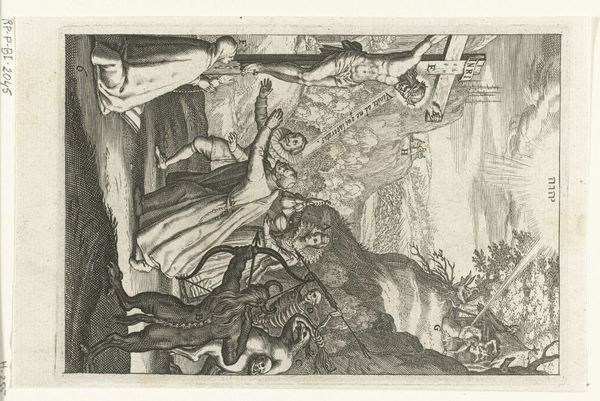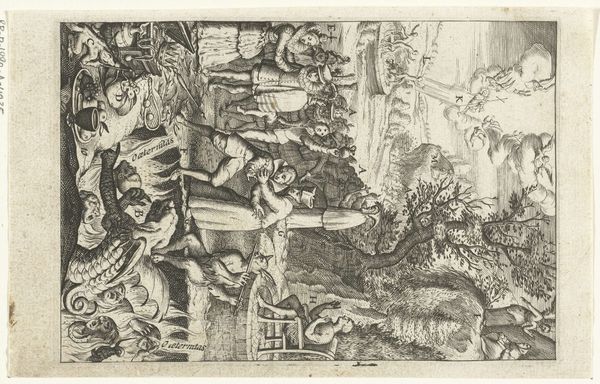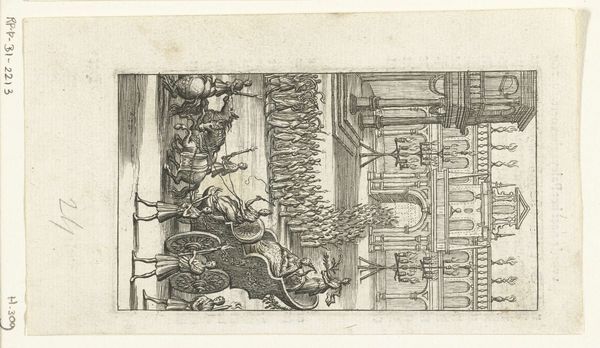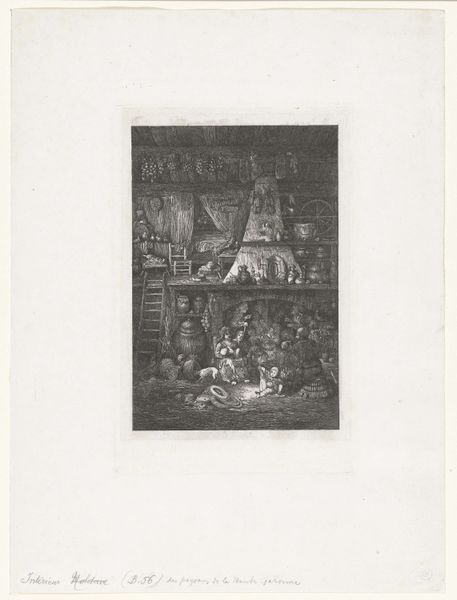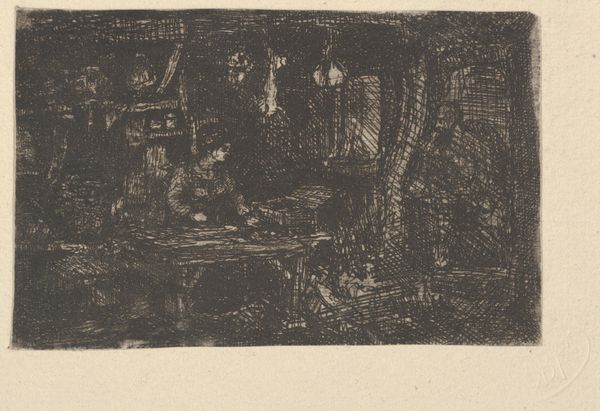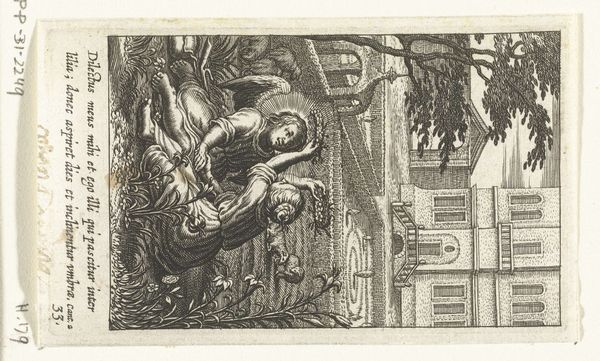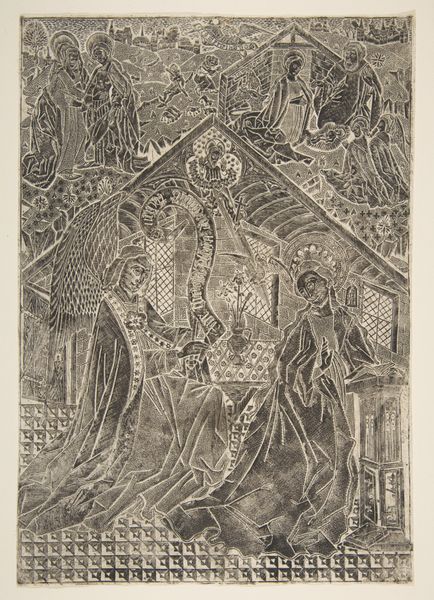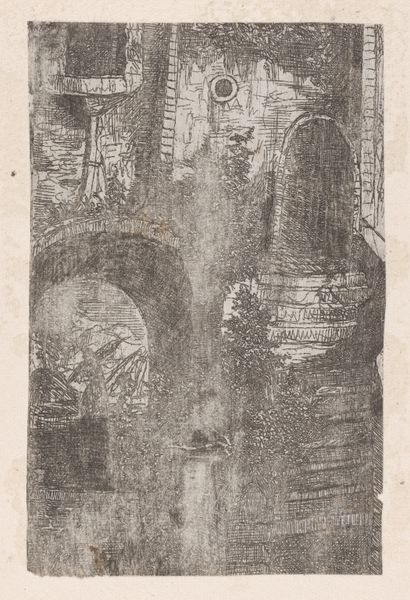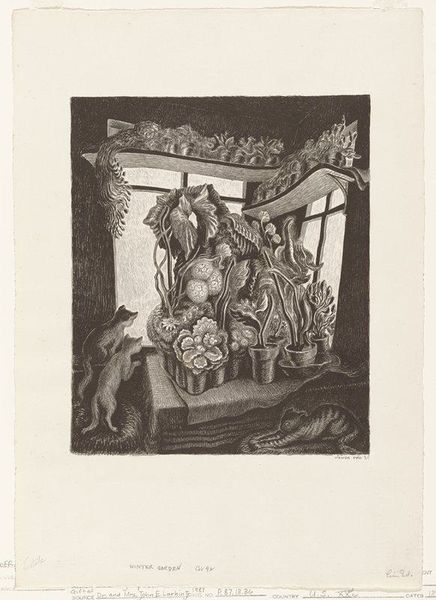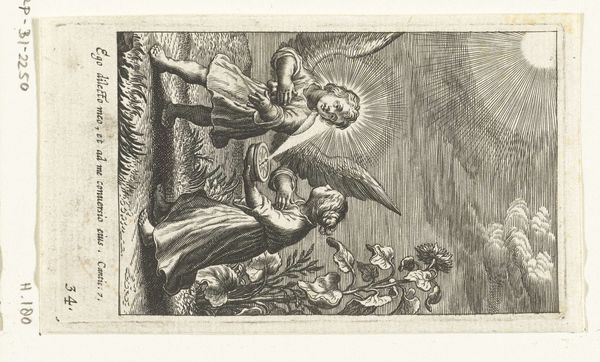
print, etching, engraving
#
baroque
# print
#
etching
#
figuration
#
history-painting
#
engraving
Dimensions: height 113 mm, width 64 mm
Copyright: Rijks Museum: Open Domain
Curator: What strikes me immediately is the dramatic tension in this engraving. There's a distinct juxtaposition between the clear, almost geometric composition on the left, and the swirling chaos on the right. Editor: Indeed. Today we’re examining "Heks tovert demonen voor Willemynken," made between 1590 and 1638, an etching and engraving by Boëtius Adamsz. Bolswert, currently held at the Rijksmuseum. But that tension you observe—I can't help but read that in the context of the intense persecution of women, especially during the witch trials of this period. Curator: A valid point. Formally speaking, observe how Bolswert uses contrasting textures to define these separate spaces. The tight, parallel lines create solidity and order in the area with the figures and pillars, which opposes the free, almost frenzied scribbles which materialize those hellish forms of dark, almost uncontrollable energies. Editor: Exactly. These witches, often marginalized women, were seen as conduits for chaotic forces. Bolswert depicts that perceived disruption using powerful visual rhetoric, creating fear and distrust in a patriarchal society that already suppressed female voices. This is not just artistry—this is cultural coding about power and societal gender expectations, manifested via fear and horror of a demonic underworld controlled by outcast women. Curator: I see what you mean, but don't overlook how Bolswert masterfully plays with light and shadow to guide the viewer’s eye. See how the dark areas draw the eye, before subtly using a lighter application to depict the faces of figures, pulling us in to the more traditionally grounded area on the right of the piece? Editor: And those demon figures rising from the swirling cloud; are they not representative of repressed desires and anxieties bubbling to the surface within the confines of social control and religious mania? It serves as a potent reminder of the horrors inflicted on individuals who were othered and accused of consorting with evil. Curator: Well, whatever interpretation, I do agree the artistry at play remains undeniably striking, with his sophisticated layering and detail. Editor: Yes. Art such as this can certainly act as both document and critique of how narratives around power and fear affect very real lives throughout history, particularly of vulnerable individuals and outcast communities.
Comments
No comments
Be the first to comment and join the conversation on the ultimate creative platform.
